Pret-a-Porter receives a stylish new look, but does its vintage gameplay still appeal?
A popular and often sought after release, Pret-a-Porter has just been printed for a third time by Portal Games. But how does this fashion themed economic game continue to draw in the crowds almost ten years after its original release?
First of all, any game about the fashion industry is going to need to look the part, and Pret-a-Porter is certainly a stylish and attractive looking game. The artwork (primarily by Kwanchai Moriya in this new edition) is fairly chic, and the colours — pinks, purples and artistic splashes – are key to the overall visual appeal. The images of figures, buildings and clothes are finely detailed and the iconography is very clear.
Whilst I’m not a fan of fashion per-se, I often find that board and video games give me the opportunity to explore industries or mechanics that I wouldn’t otherwise find of any interest at all. Pret-a-Porter is certainly the kind of game that does that, and whilst the entire game centres around the fashion industry — including participating in fashion shows – it is much more about the economics of running a fashion house than it about the finer points such as actually designing the clothes.
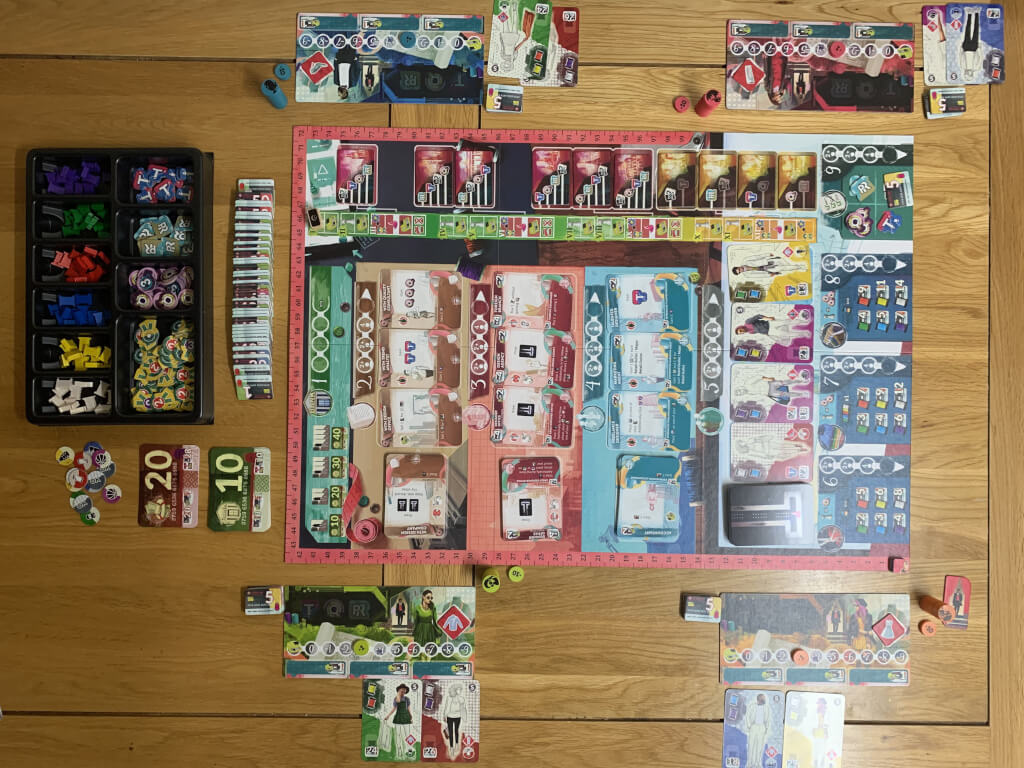
Being specific, Pret-a-Porter is a game about becoming the most prestigious fashion house around; a feat that can only be achieved by designing and producing garments, as well as establishing your brand as a well regarded outfit (pun intended.) Whilst prestige is what counts towards victory, generating Quality, Trendiness and PR Tokens all helps, simply because such things are key to creating momentum around your brand.
Mechanically, Pret-a-Porter is a relatively straightforward game to play, but like so many economic games, it is challenging to play and tough to master. Groups who play Pret-a-Porter together often will become highly competitive and will likely develop various strategies that lead them to victory, even though I wouldn’t say (in my own limited experience after about six games) that there is an obvious way to win.
During setup, the players will take their own personal player board, then they’ll choose an area of expertise at random from among the five tokens that show shoes, shirts, dresses and so on. On the back of each token are two numbers that represent starting designs that the player will have access to. Alongside their designs, each player also takes three workers and two tracking disks in their colour, as well as a scoring token.
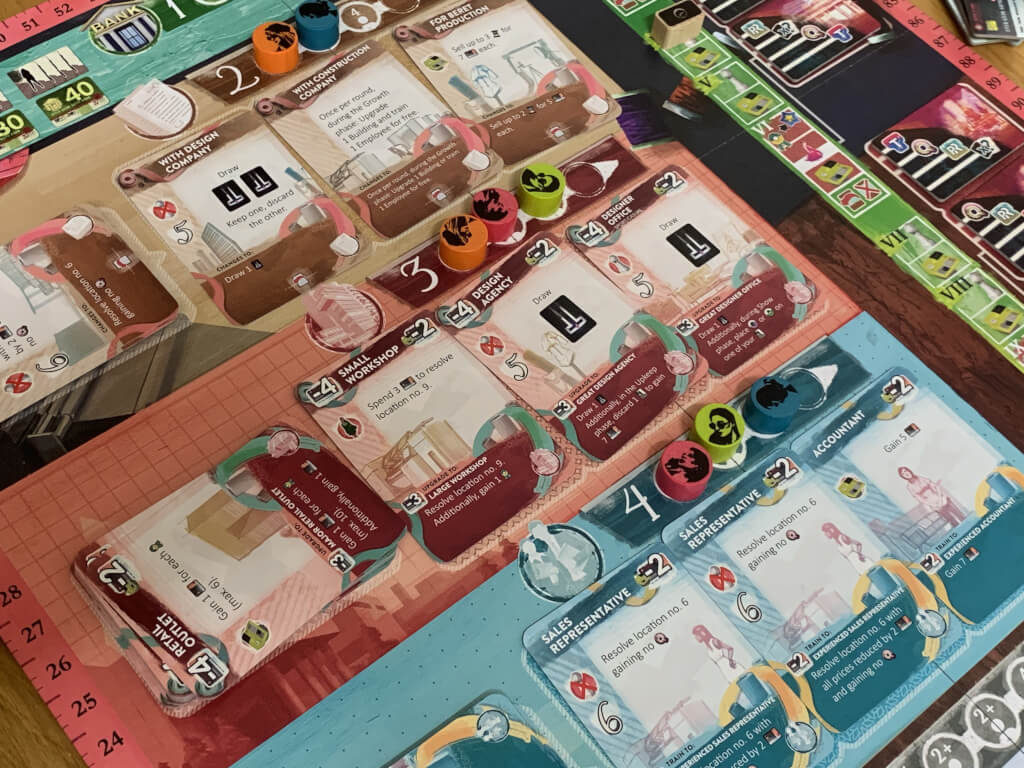
On the main board, several of the worker placement areas need to be loaded with cards or tokens. Decks are shuffled and placed before three contracts, three buildings and three staff members are turned up and placed face up in their respective areas. The design card deck is also shuffled, but instead of three designs, four are placed. Finally, the last of the nine placement locations is loaded with a few different tokens, each of which sits in their own area waiting to be collected.
When the game begins, the players take it in turns to place their workers one at a time, beginning with the first player. As I mentioned before, each player has three worker tokens that will be placed onto the board, and depending on the number of players, each of the nine placement locations will only be able to support a limited number of workers — and it’s fine for the same player to visit a single location twice.
With all workers placed, players will then resolve their actions one at a time, beginning with the first placement location, then the second, third and so on. Each location is resolved from the first worker to the last, meaning that players who get to specific locations earlier in the order will be able to choose from more options. For example, the first player to choose a contract, building, staff member or design will have the pick of all available cards, whilst those who follow will see ever fewer options.
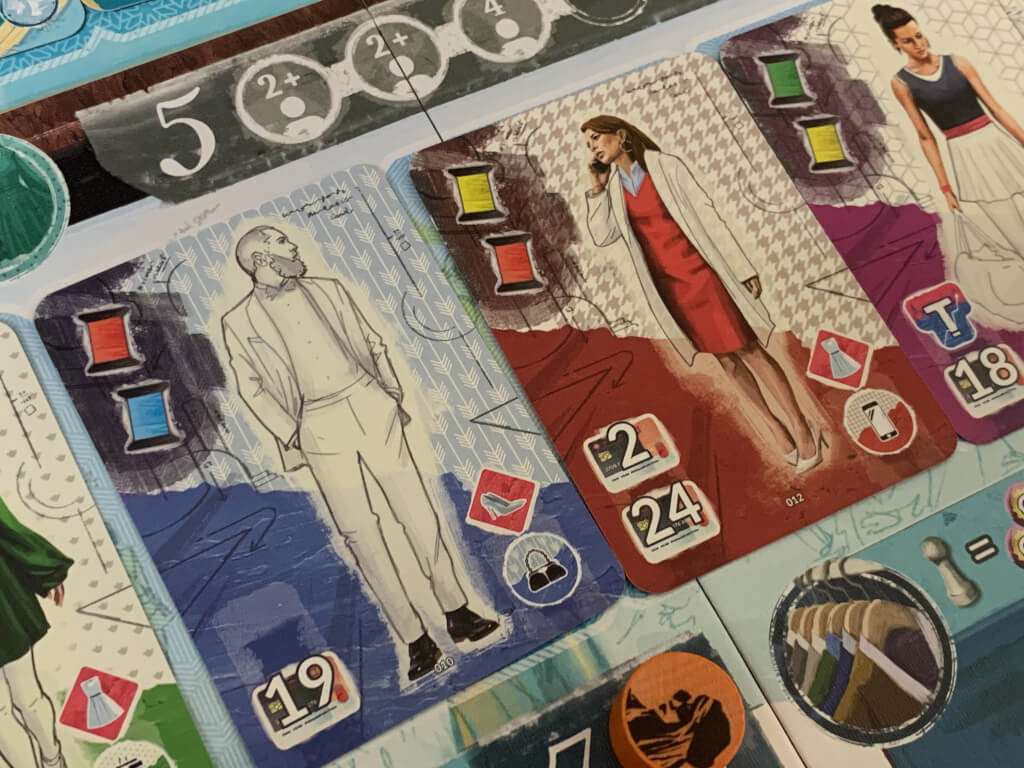
As well as being able to choose from cards that will be placed alongside their player board (thus expanding their capabilities), players will also be able to access foreign, domestic and luxury textile markets, each of which has a different rule and cost associated with the different coloured fabrics. Each design has at least two fabrics associated with it that must be purchased in order to turn the design into a garment, and the different markets each generate between one and three Quality tokens.
The final placement location simply allows the player to choose from five money, or between Trend, Quality and PR tokens. This space is generally a bit of a last resort, although it can sometimes be useful to come here if you have a specific need for something and you can ensure first pick. In general though, there are other ways to generate tokens that are more efficient.
Each game of Pret-a-Porter takes place over twelve rounds, which represent months of the year. Each quarter consists of two working rounds and one exhibit, during which the players demonstrate their clothing. Another aspect of setup that is determined somewhat randomly is the focus of each fashion show, which is driven by tokens that are placed along the timeline track. This makes the scoring criteria for each show clear so that players can strategise accordingly.
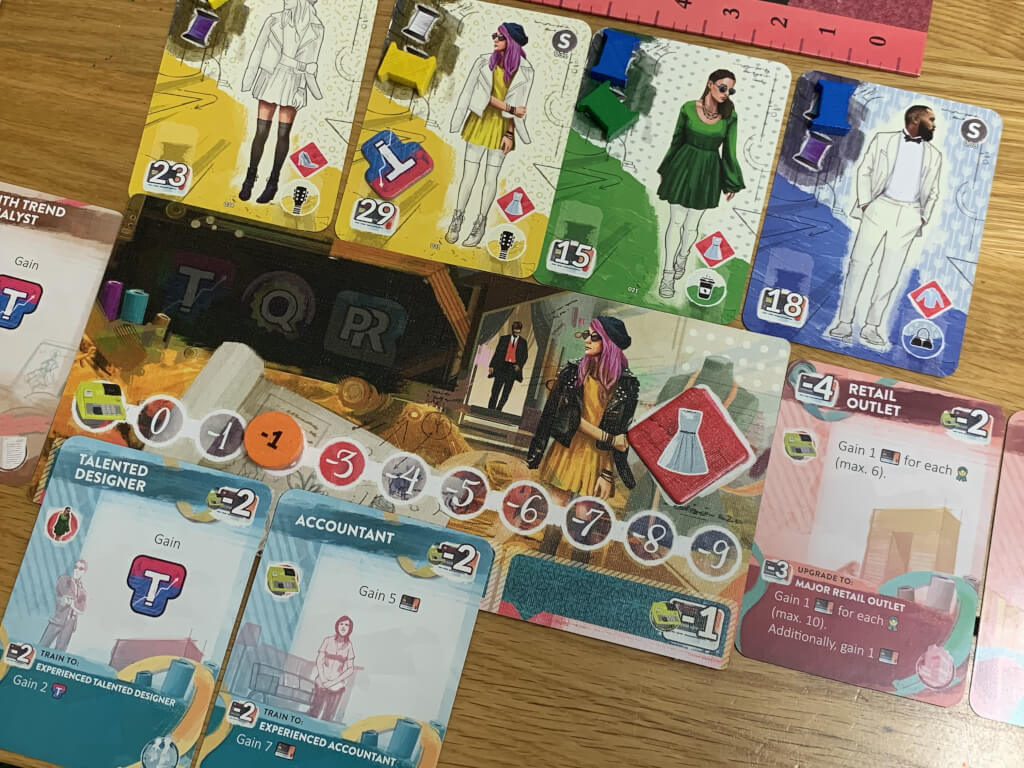
What I’ve described so far is largely related to the working rounds. When an exhibition round happens, the players will submit their collections for judgement, applying all possible modifiers to score as much prestige as possible. Bonuses can be achieved by creating collections of garment that have matching symbols, whilst Quality, PR and Trend tokens all contribute in their own way. Buildings like Modelling Agencies and staff members like Experienced Models add to these modifiers as well.
Some of the exhibitions score up to four areas, whilst others might only score in two. This is depicted by how the lines on each of the random exhibition tokens align to those shown on the calendar and whilst this is hard to pick up at first, it soon becomes second nature. One exhibition might be looking for very trendy garments, whilst another might want a high quality rating or a lot of PR. Designs appearing in shows also generate cash, which is good, because most of the time in Pret-a-Porter you’ll have a negative cash flow.
At the end of the final exhibition, the players will compare their scores against each other and determine a winner. There’s no hidden scoring or secret objectives, although there are a few ways to convert tokens into points right into the final exhibition, and it can be challenging to compare your own likely score with those of your opponents simply because there’s a lot going on, but I have found Pret-a-Porter to be fairly tight on most occasions.
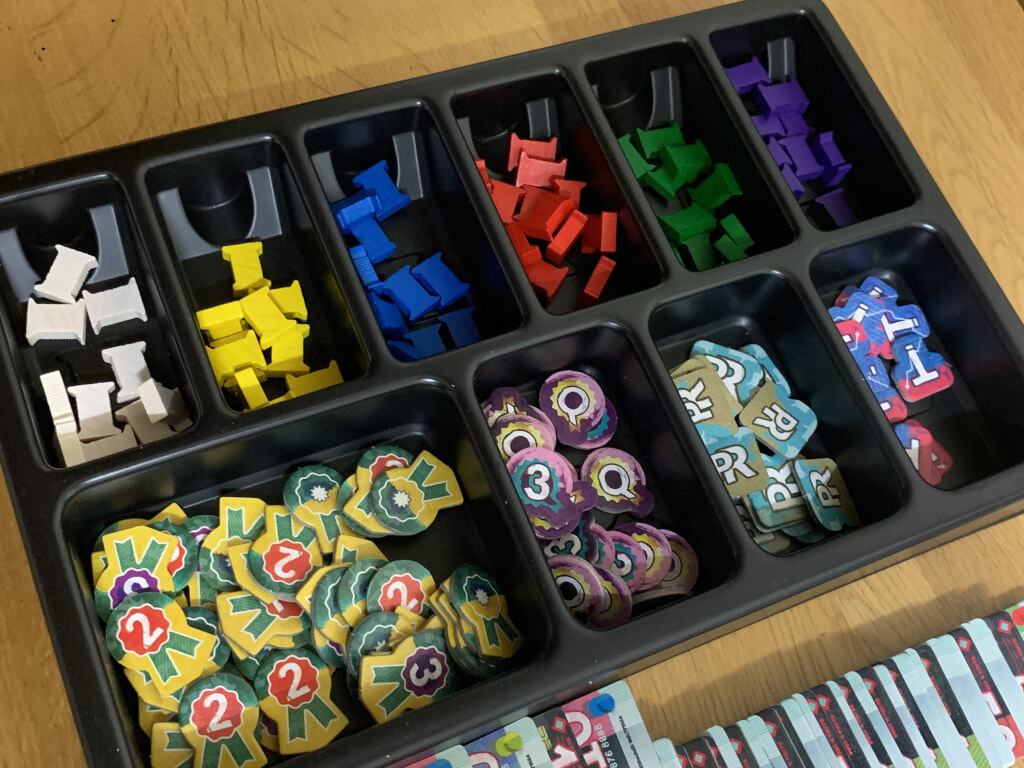
Having played a number of different economic games including the likes of Kanban, Futuropia and The Manhattan Project: Energy Empire, I found Pret-a-Porter relatively straightforward in many respects. The actual placement of workers and the actions that they can take are all simple to follow, and the flow of the game is easy to teach and something that I think almost anyone could pick up.
The more challenging aspects from from the financial management of each brand, as well as in preparing for and optimising the fashion shows themselves. Hiring staff and adding buildings to your brand is essential, but each new addition raises the upkeep cost that must be paid in each round. Overinvestment will lead to bank loans and credit cards being needed, which in turn must be paid back and will also generate interest of their own.
The exhibitions come around rather quicker than you might expect, and any player who hasn’t closely managed their actions to get a few designs onto the production line will likely end up in trouble. Assuming that all players are of a level of experience where they can participate, then Pret-a-Porter becomes a game of fine margins as each player manipulates their actions carefully to maximise their score through the use or PR, Quality and other tokens.
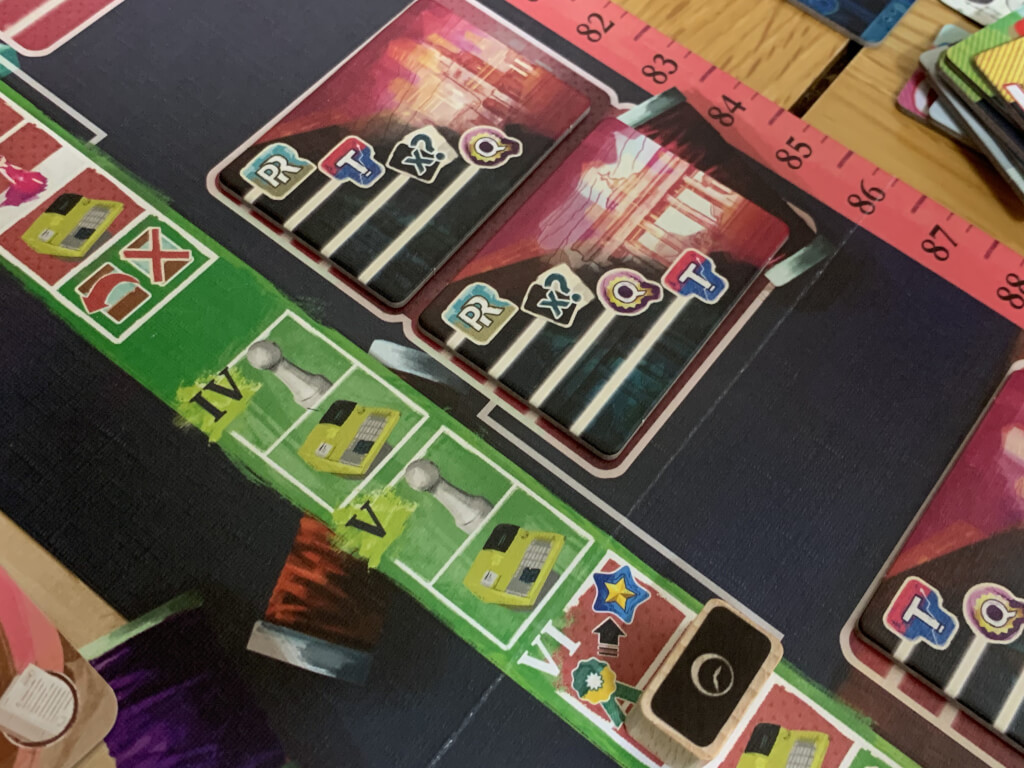
The look of Pret-a-Porter is striking and individual, which I think suits the genre down to a tee. The theme also comes through in the gameplay, I think, which does feel very much as though it simulates a year in the fashion industry — albeit somewhat rigidly. There is little or no real player interaction except for interception of key spaces, but this is the kind of game would invoke table breaking fury if a well-laid plan were to be interrupted by a card that destroyed another players work, for example.
Ultimately, I like the look and feel of the game, and I enjoyed the easy to play but tough to master gameplay. Economic games are notoriously heavy in terms of their gameplay, but this is often made true because of complex mechanics. Pret-a-Porter isn’t hard to learn or teach, it’s just a game that demands that players take advantage of every edge or fine margin that they can. As such, whether you like the theme or not, Pret-a-Porter is a very solid economic game that really shines through the complex scoring during each exhibition.
You can purchase Pret-a-Porter via Portal Games.
Love board games? Check out our list of the top board games we’ve reviewed.

Comments are closed.